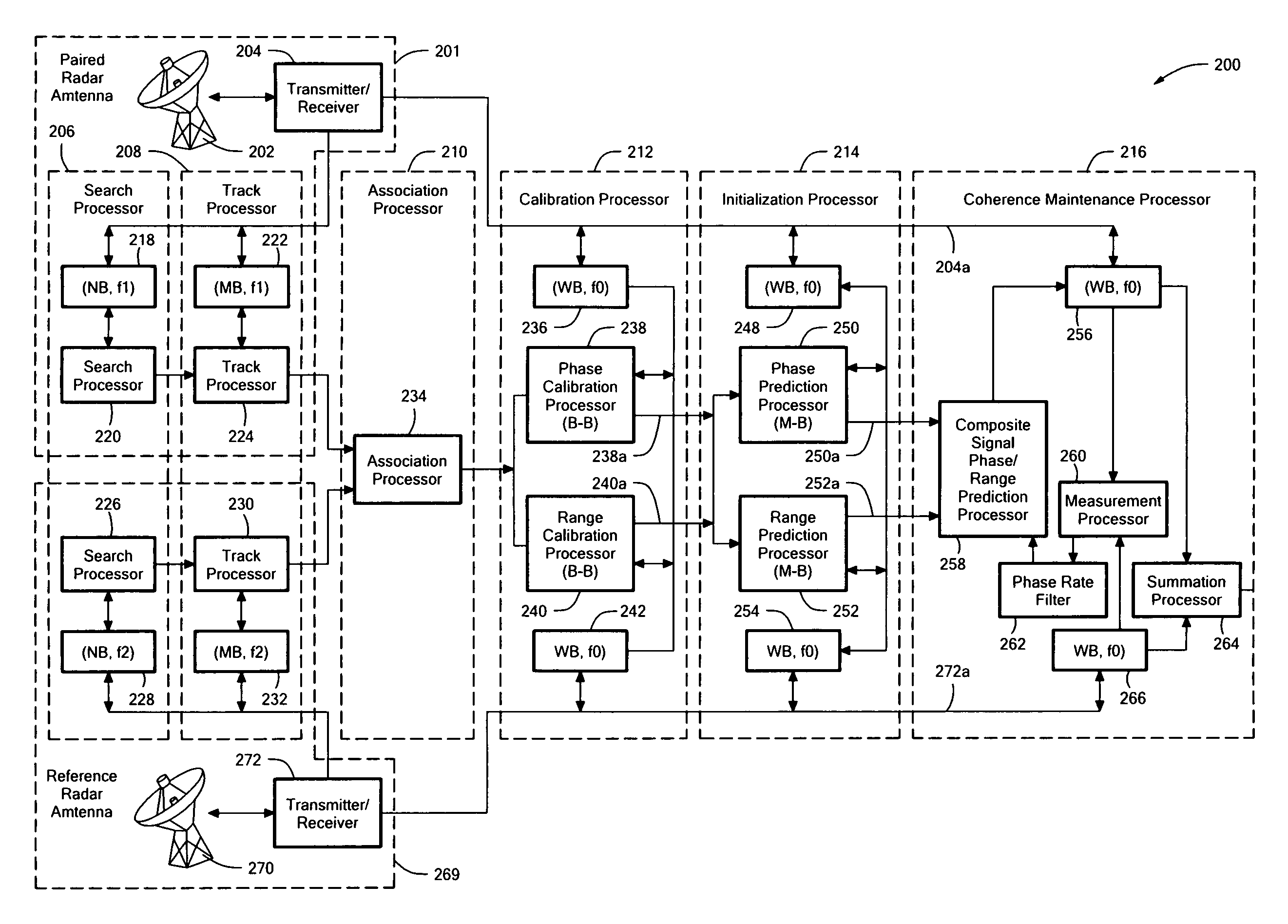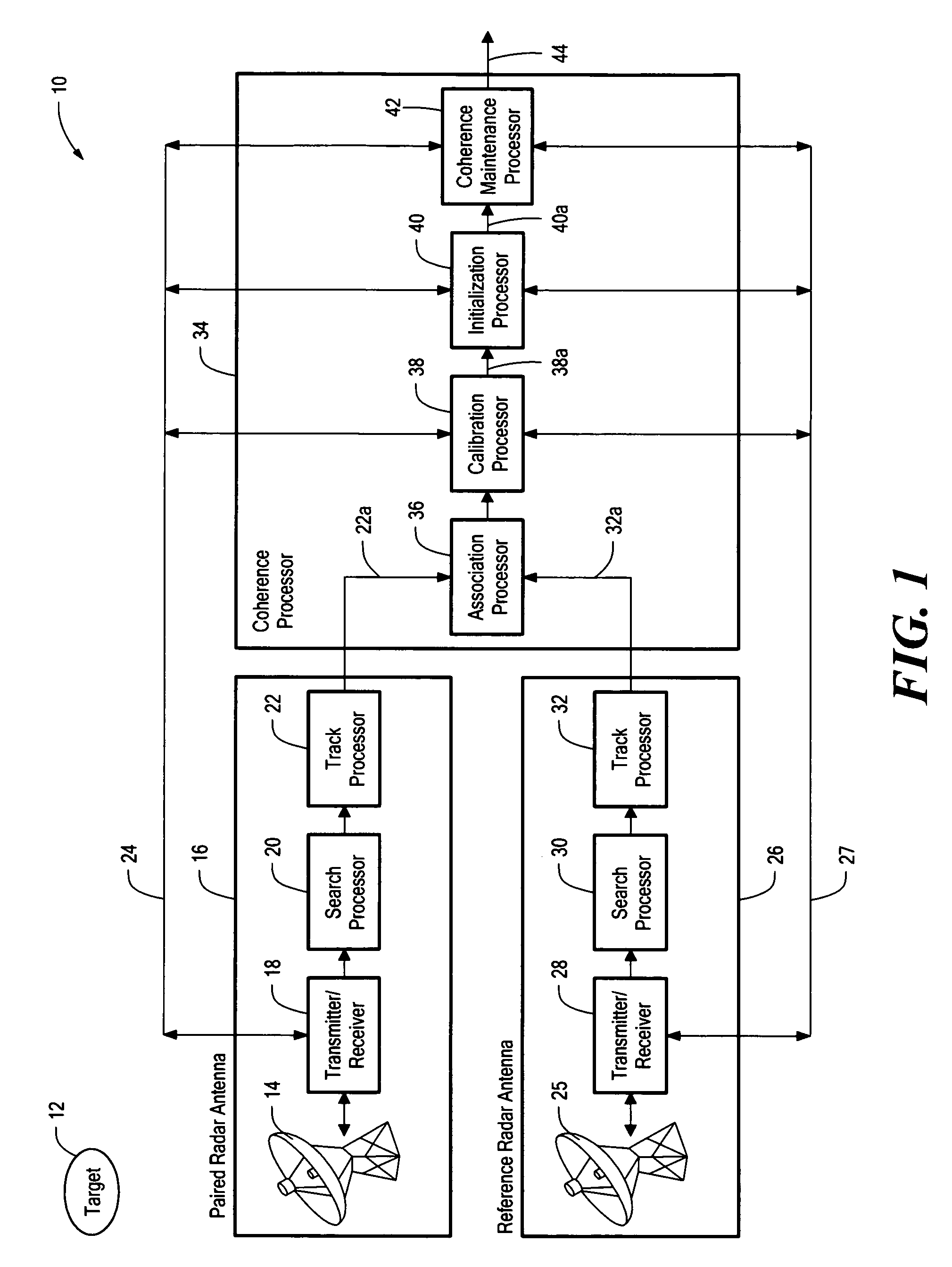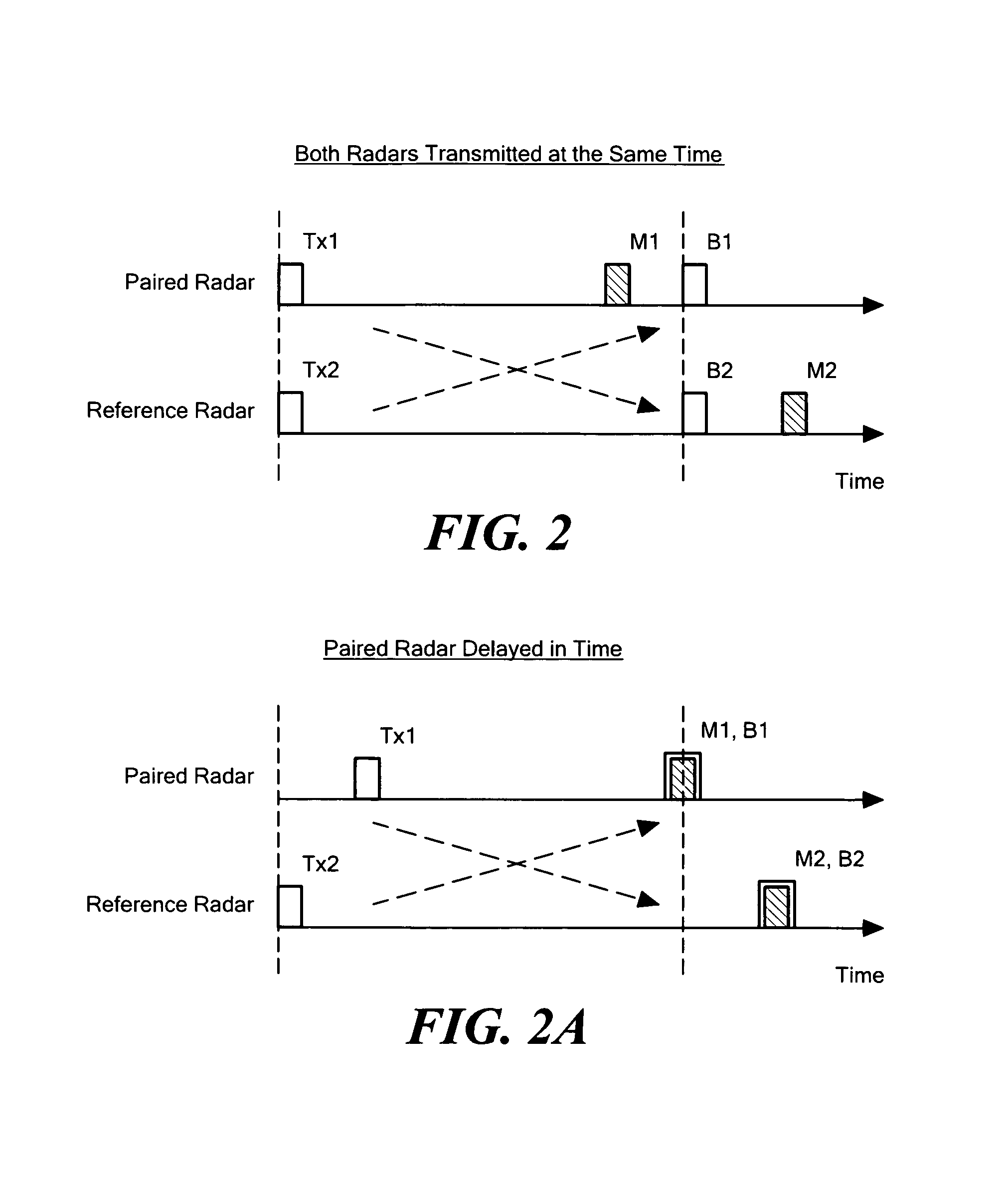System and method for coherently combining a plurality of radars
a plurality of radars and coherent technology, applied in the field of radar systems and methods, can solve the problems of inaccuracy measurement, long and expensive process of new radar design, and use of existing radars, and achieve the effect of improving signal gain and improving signal gain
- Summary
- Abstract
- Description
- Claims
- Application Information
AI Technical Summary
Benefits of technology
Problems solved by technology
Method used
Image
Examples
Embodiment Construction
[0030]Before describing the system and method of the present invention, some introductory concepts and terminology are explained. As used herein, the term “reference radar” is used to describe one radar selected from among a group of two or more radars. As used herein, the term “paired radar” is used to describe any radar other than the reference radar selected from among the group of two or more radars.
[0031]While much of the discussion below describes but one paired radar, it should be appreciated that there can be any number of paired radars, and the same apparatus and methods described below can apply to each paired radar. The reference radar and the paired radar described below can be different types of radars. The paired radar is sometimes referred to herein as “radar 1” and the reference radar is sometimes referred to herein as “radar 2.”
[0032]As used herein, the terms “range” and “time delay” are sometimes used synonymously. One of ordinary skill in the art will understand t...
PUM
 Login to View More
Login to View More Abstract
Description
Claims
Application Information
 Login to View More
Login to View More - R&D
- Intellectual Property
- Life Sciences
- Materials
- Tech Scout
- Unparalleled Data Quality
- Higher Quality Content
- 60% Fewer Hallucinations
Browse by: Latest US Patents, China's latest patents, Technical Efficacy Thesaurus, Application Domain, Technology Topic, Popular Technical Reports.
© 2025 PatSnap. All rights reserved.Legal|Privacy policy|Modern Slavery Act Transparency Statement|Sitemap|About US| Contact US: help@patsnap.com



